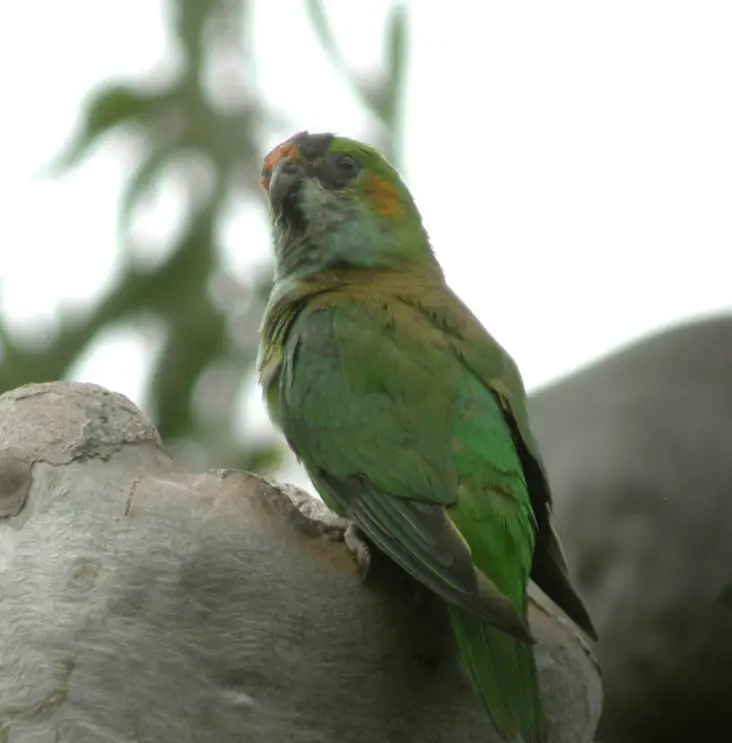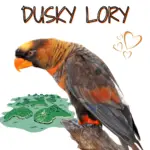
Purple-crowned Lorikeet 15 cm; 37–50 g. Bill black; frontal band and lores fiery red; crown deep purple; upper cheek to nape light green, except ear-coverts orange-yellow; chin and lower cheek to mid-belly pale blue, shading on flanks, thighs, and lower belly to light green;
mantle stained olive-brown; rest of upperparts rich green; the leading edge of wing blue; underwing-coverts red, the underside of flight-feathers brown. Immature has reduced head color.
Forms a species pair with G. pusilla. Monotypic.
Subspecies
Monotypic.
Distribution
SW to SE Australia, including Kangaroo I, with vagrant flocks recorded as far N as SE Queensland.
Habitat
Lightly wooded inland country, notably dry mallee areas and open savanna, but also heavy Eucalyptus forest and coastal scrublands, often plentiful in suburbs.
Movement
Partly nomadic, some birds are seemingly sedentary but others form large flocks, and in Victoria (except extreme W) its presence in any area is related to the flowering of eucalypts.
SOURCE: Victorian Natives
Purple-crowned Lorikeet regularly penetrates far SW New South Wales, and vagrants have reached SE Queensland.
Purple-crowned lorikeet Diet
Nectar and pollen from blossoms of various Eucalyptus (at least 13 species identified), Melaleuca, and Myoporum insulare trees, sometimes moving to heathland for Banksia flowers in winter; fruits may also be taken, and the species may cause damage in orchards.
Purple-crowned Lorikeet call
Commonest call is a high-pitched, shrill but rather buzzy “tzip!” or “zeep!”. When feeding, repertoire is slightly more extensive, sounding like a chattering.
Breeding
Aug–Dec. Purple-crowned Lorikeet Nest in a hollow limb or hole in the tree, usually a living or dead eucalypt near water. Often loosely colonial. Eggs 3–4; in captivity, incubation 22 days, nestling period c. 6 weeks.
Purple-crowned Lorikeet pet
SOURCE: OzBirdZ
Conservation Status

Not globally threatened. CITES II. Common in most of the range, becoming less frequent in Victoria; however, a substantial chronic decline in numbers is documented in SW Australia.




















